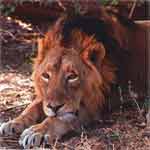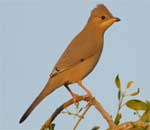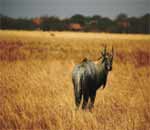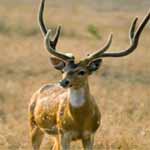INTRODUCTION
The main reason behind the establishment of the Gir National park is to preserve the Asiatic Lion with its little left population outside of Africa. The Gir National Park which sprawls over an area of about 1412.13 sq km was established on 18th September, 1965. It was initially the hunting grounds for the Nawab of Junagadh. But however later in the year 1966 the Government bodies defined an area of about 600 sq km bounded as the Gir forest area. This got extended upto 1412.13 sq km.In the year 1975 a core area of approximately 300 sq km was officially declared as a national park. The Gir National Park has a steep history which apart from the
wildlife also has places of other attraction like Kankai Mata and Tulsishyam which are antique temples of places of pilgrimage with hot springs. The forest is famous for its cattle herders, the Madharis, whose buffaloes form a substantial part of the lions' meals. There are lot of folklores and traditions associated with the Madharis for their coexistence with lions. But however over years their lifestyle has changed a bit. The Nalsarovar Lake and Sanctuary; the Rann of Kutch and the Flamingo Islands are also the other places of interests in the vicinity.
LOCATION
The Gir National Park is situated in the Gujarat state along the south-west border of the Saurashtra Peninsula. It is flanked by three unique reserves namely the Nalsarovar Lake and Sanctuary; the Rann of Kutch and the Flamingo Islands.
BEST TIME TO VISIT GIR FOREST
The ideal time to visit the Gir National Park is between the months of November and June.
However people who are interested in wildlife keep travelling to the park any time.
ATTRACTION
FLORA
The flora of the Gir forest is of great interest for the researchers in the field of science, educational, aesthetic and recreational values. It has got distinct type of mixed deciduous vegetation along the main rivers and streams. Some of the species of flora includes teak, flame of the forest, Acacia, Jambu, Karanj, Umro, Vad, Kalam, Charal, Sirus, Amli and Banyan trees. These are broad leaved evergreen trees which add to the moisture content of the weather thus giving the area a cool shade. There are Teak, Jamun, Tendu and Dhak trees interspersed with large patches of grasslands. With such thick growth of vegetation it is a very pleasant drive within the Gir Wildlife Sanctuary. But however the forest remains dry for most of the time with scrub trees, like babul and few flowering trees.
FAUNA
The Gir forest apart from its noted lion population is also quite common for the predator
Leopard. In India Gir Wildlife sanctuary has the largest population of leopards than anywhere else. The population of lion and leopard is spread along states of Rajasthan, Gujarat, Haryana, Punjab, Uttar Pradesh and Madhya Pradesh. The other common animals seen in this area includes Sambar Deer, Chital Spotted Deer,
Nilgai Antelope,
Chowsingha Four-Horned Antelope,
Chinkara Gazelle,
Wild Boar,
Langur Monkey,
Jackal, and
Hyena.
AVIFAUNA
The Gir National Park is also very suitable for a large number of bird species with its ideal climate and number of excellent water bodies. Some of the bird species seen here are Paradise Flycatchers, Black headed Cuckoo Shrike, Gray Drongo, Pied Woodpeckers, Coppersmiths, Indian Rollers, Crested Swifts, Fish Owls, Black Vultures, Shaheen Falcons, Bonelli's Eagles, Flamingo, Crested Serpent Eagles, Painted Sandgrouse, Rock Bush Quail, Gray Partridge, Painted Storks and White Necked Storks.
REPTILES
The reptile population of the park is mainly represented by Marsh Crocodiles, Monitor Lizards, Pythons and a large variety of snakes. There is an interesting breeding farm for crocodile at Sasan, which also provides the specimens that are relocated into the water reservoirs inside Gir.
OTHER ATTRACTION
JEEP SAFARI
Jeep safaris are undertaken during the early morning hours till evening. A forest department guide is always their with the visitors on these jeep trips taken inside the park. There is a fixed entry and exit time into the forest. The Jeep Safari in Gir Wildlife Sanctuary takes you through the open grasslands, ruins of Wilderness and other forested areas where you can spot wild animals near these places.
JUNAGADH
Junagadh is a place very famous in the Gir area for its tribal population. A couple of tribes still reside inside the park co-existing with the wild animals. A visit to these tribal villages is an interesting experience that introduces the visitors to the unique lifestyle and ways of living of the tribal people. The other nearby places which can be visited from Dudhwa National park is Lucknow at a distance of about 182kms and Delhi and its neighboring places.
ACCOMMODATION AND EAT OUTS
•Though there are not many places for accommodation in this area some of the few present here seems to cater to the needs of the visitors coming here.
•Sinh Sadan Guest House - This is run by the Gujarat Tourism board along with a hotel.
•The Gir Lodge, Gir
•Hotel Maneland Jungle Lodge,
Sasan Gir
Lion Safari Camp
| |
Travel Guide
Travel Information
|
GETTING THERE
BY AIR
The nearest airport from Gir is Keshod 90-kms via Veraval. Visitors can easily catch daily flights from Mumbai to Keshod.
BY RAIL
The nearest rail connection is the meter gauge rail line of 395-kms from Ahemdabad.
BY ROAD
Gir is situated at a distance of 400-kms from Ahmedabad via Rajkot, Junagadh and Mendarda. State Transport buses are easily available from Junagadh and Veraval to Gir, between November and June.






